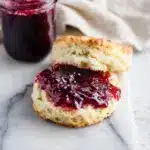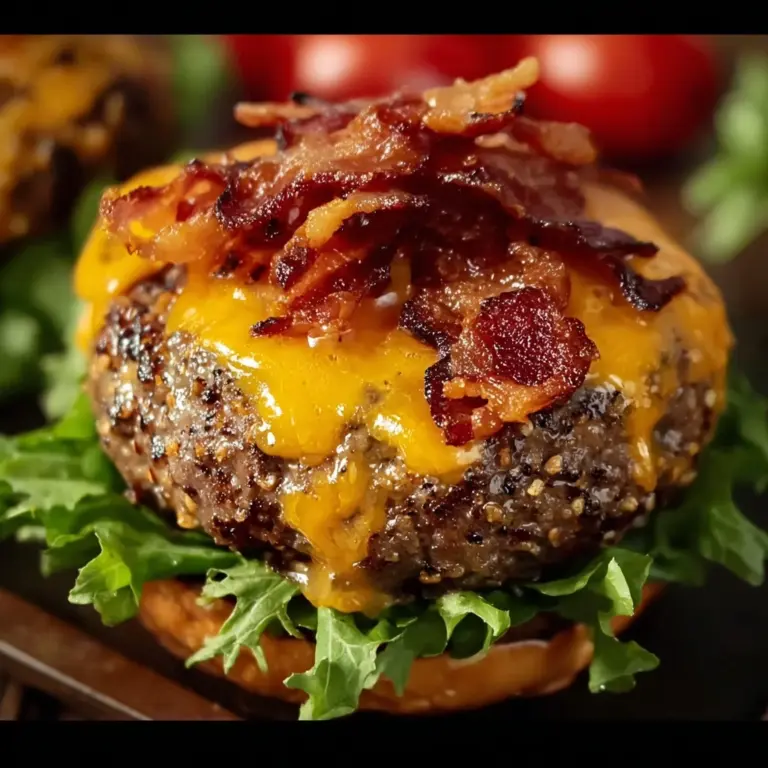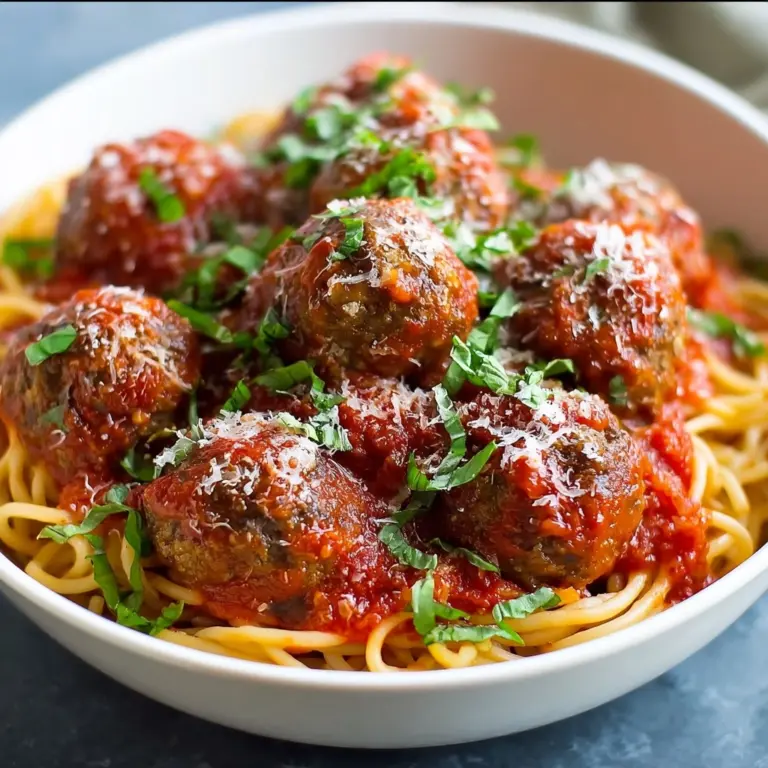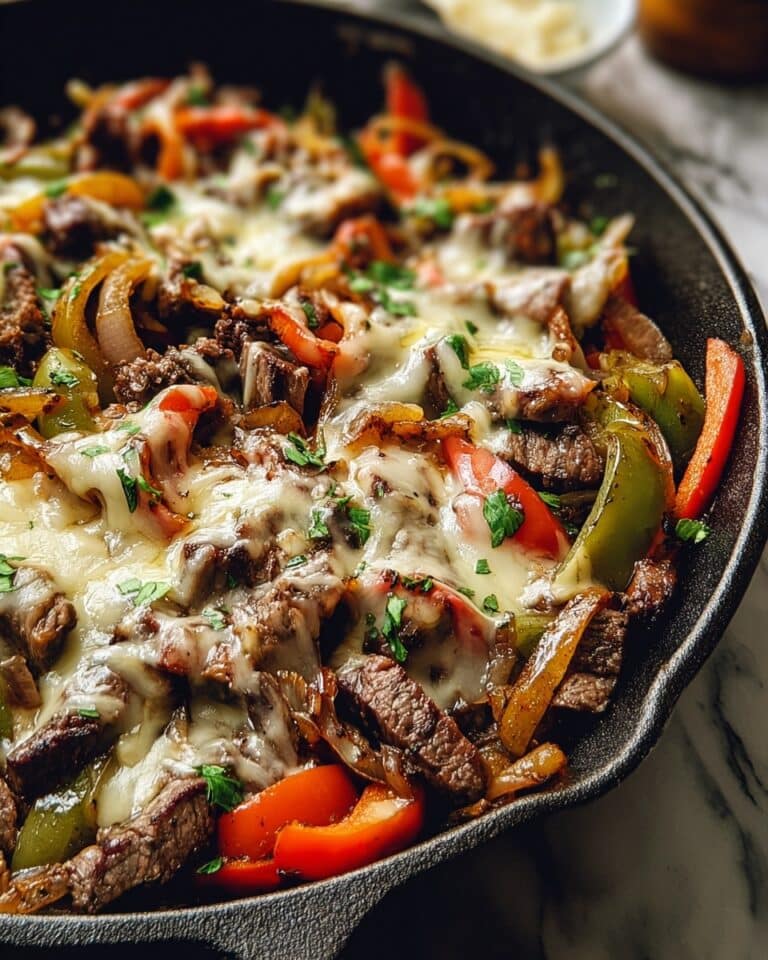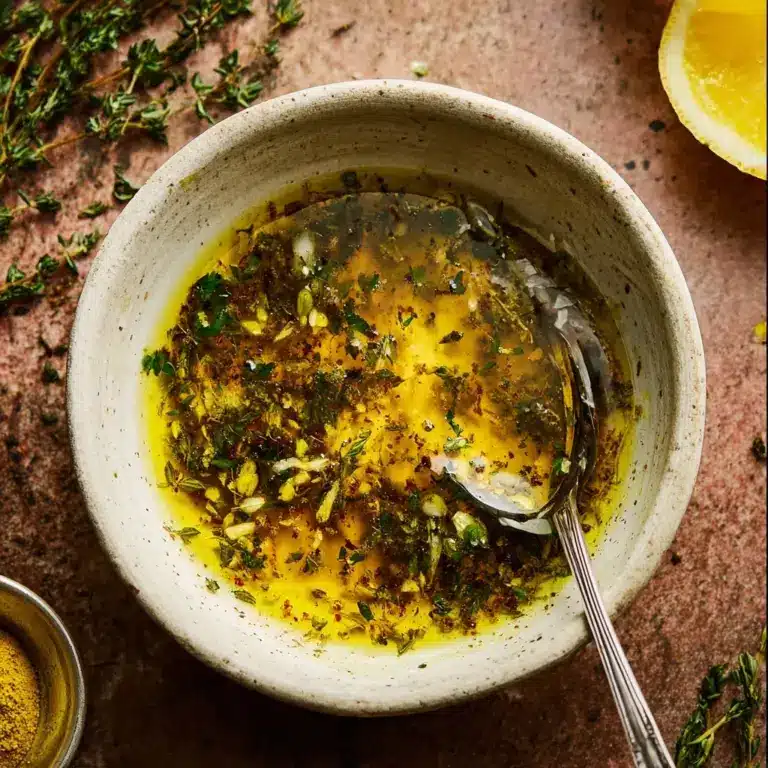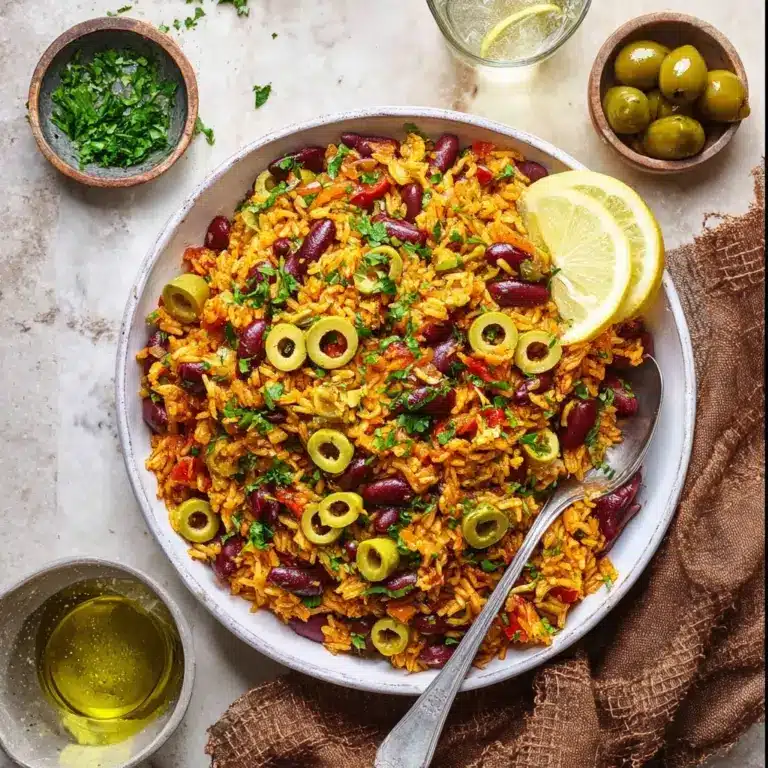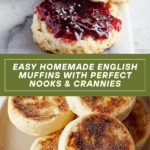English Muffin Recipe
If you have ever wished for warm, homemade bread with that perfect texture and delightful nooks and crannies, this English Muffin recipe is about to become your new favorite. These soft, tender muffins are a true comfort food, golden on the outside and delightfully chewy inside. Unlike store-bought versions, making English Muffins from scratch offers that fresh-baked aroma and a taste that is truly unbeatable. Whether you love them toasted with butter or piled high with your favorite toppings, this recipe is simple, satisfying, and absolutely worth every step.
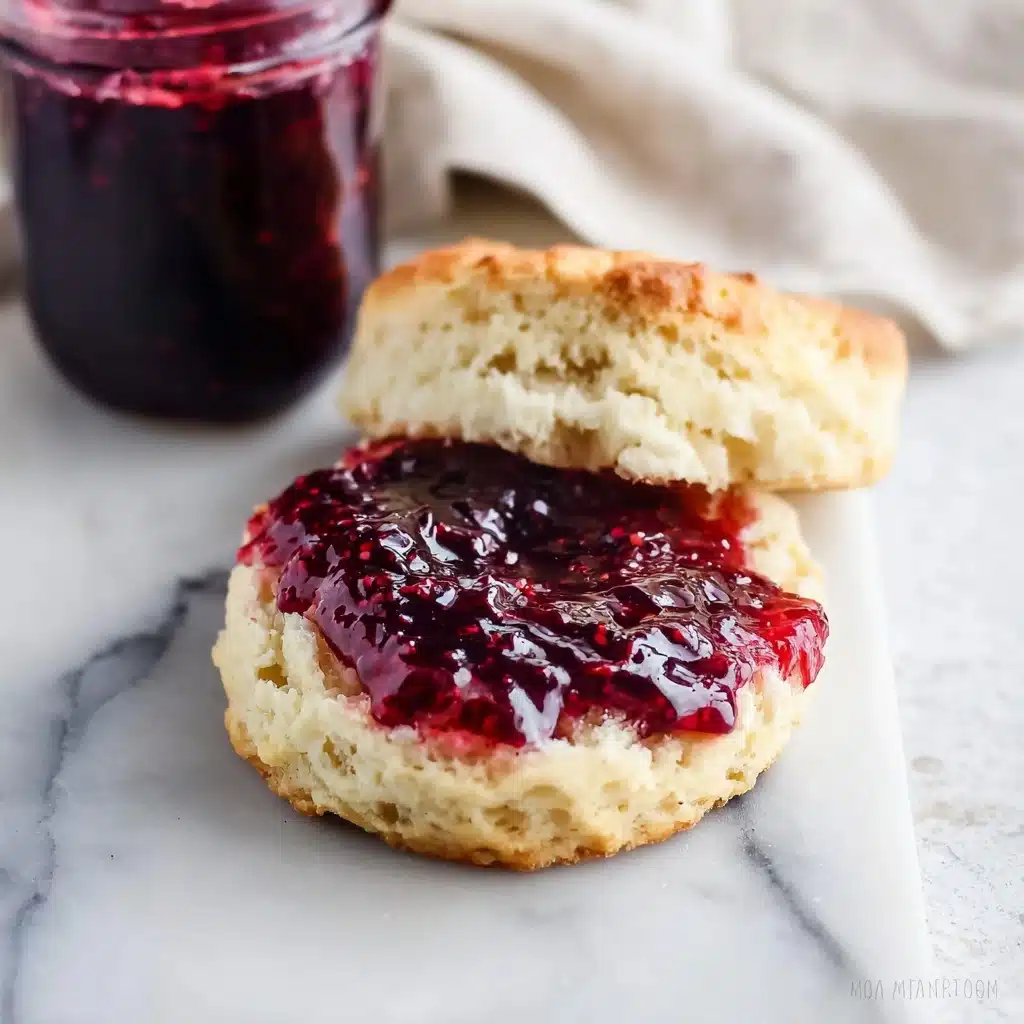
Ingredients You’ll Need
The beauty of this English Muffin recipe lies in its use of straightforward, pantry-friendly ingredients that combine to create a complex texture and flavor. Each item plays a key role in delivering that signature chewy crust and soft, airy interior you crave.
- All-purpose flour: The foundation for structure and chewiness, giving the muffin its bulk and texture.
- Salt: Enhances the flavor with just the right balance, making every bite taste richer.
- Buttermilk: Adds a subtle tang and tender crumb, plus it reacts with yeast for beautiful rise.
- Butter: Infuses the dough with richness and helps keep the muffins soft.
- White sugar: Just enough sweetness to feed the yeast and boost browning.
- Active dry yeast: The magic that makes your dough rise and develop airy pockets.
- Cornmeal: Creates that classic crunchy crust and prevents sticking on the baking sheet.
How to Make English Muffin
Step 1: Activate the Yeast
Warm your buttermilk and butter mixture gently until the butter melts and the temperature is comfortably around 100 to 110 degrees Fahrenheit. This warms the milk enough to wake the yeast without harming it. Once warm, stir in the sugar and yeast and let it rest under a kitchen towel for about 5 minutes until bubbly and alive with activity.
Step 2: Mix the Dough
Combine the all-purpose flour and salt in a stand mixer with a dough hook, and then pour in the frothy yeast mixture. Mix thoroughly until the dough starts coming together, then continue kneading for an additional five minutes to develop a smooth and elastic texture. This kneading is essential for those irresistible nooks and crannies inside your English Muffin.
Step 3: First Rise
Place your dough into a lightly greased bowl, cover it tightly with plastic wrap, and set it in a warm, draft-free spot to rise. I love using my oven as a proofing place—just warm it to 170 degrees, then turn it off and place the dough inside. After about an hour, your dough should have doubled in size and be fluffy and ready for the next steps.
Step 4: Shape the Muffins
Dust a clean surface and your rolling pin with flour, then gently tip your dough out. Roll it to about 1/2 inch thickness and use a floured cup to cut out rounds just like making biscuits. Don’t forget to sprinkle cornmeal on the baking sheet and on top of each round; this adds that delightful crispness and stops sticking. Lay each muffin gently on the cornmeal-dusted sheet and cover them again to rise for another hour.
Step 5: Cook on the Skillet
This is the fun and unique part! Heat a dry skillet over medium heat until hot, then place your muffins in, making sure they don’t touch each other. Cook them slowly for 5 to 6 minutes on each side; this technique cooks them through gently and gives that toasted golden crust everyone loves. Once done, transfer the muffins to a rack to cool completely.
Step 6: The Big Reveal
Now, here is a little secret: don’t slice your English Muffins with a knife. Instead, use a fork to prick around the edges. When you’ve made a full circle, gently pull apart the muffin with the fork to reveal those lovely nooks and crannies. This trick opens them just right for the ideal texture to hold butter, jam, or whatever your heart desires.
How to Serve English Muffin
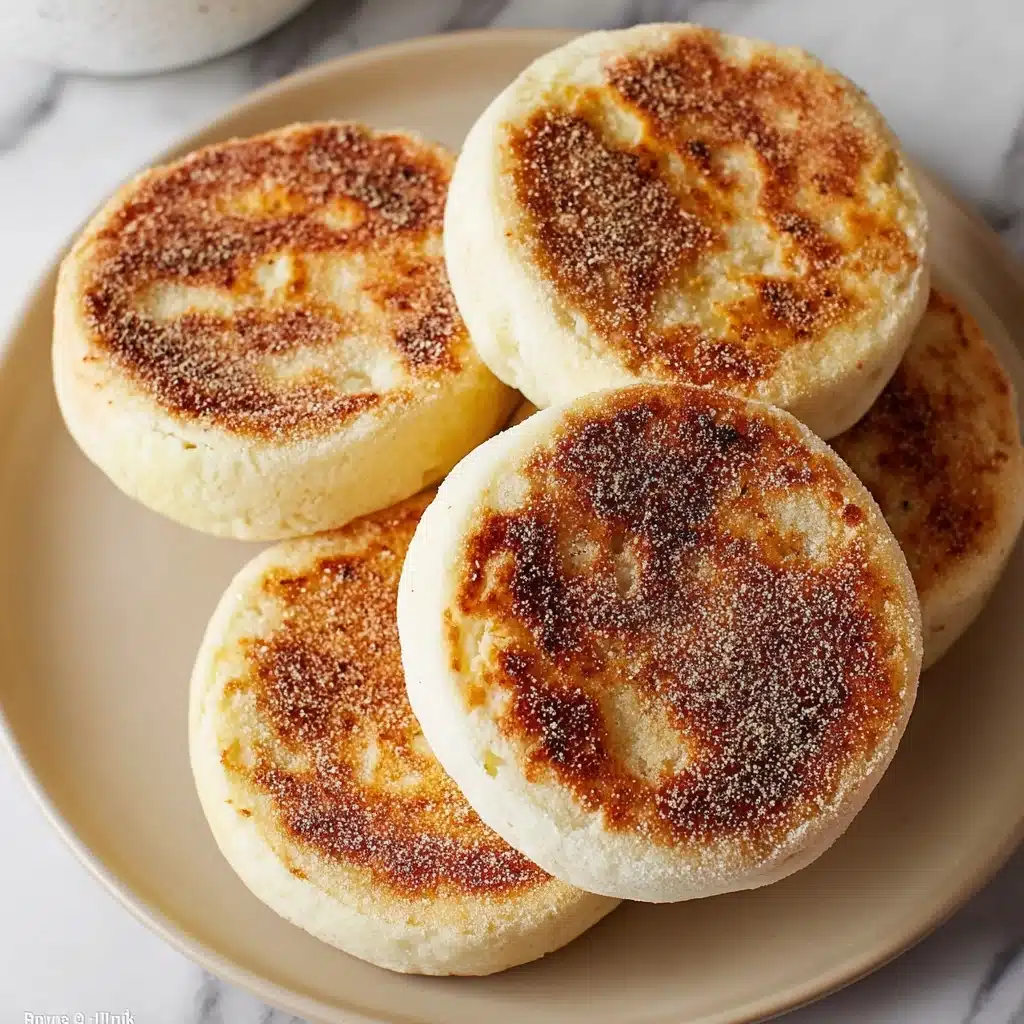
Garnishes
English Muffins are wonderfully versatile, so why not dress them up a bit? A pat of melting butter is always a crowd-pleaser, but you can also spread on cream cheese and a drizzle of honey, or even top with fresh berries for a burst of flavor. The gentle tang from the buttermilk pairs beautifully with both sweet and savory toppings.
Side Dishes
Because of their light texture and satisfying chew, English Muffins make a perfect companion for hearty breakfast plates. Serve alongside scrambled eggs, crispy bacon, or a fresh fruit salad for a balanced and inviting meal. They also work wonderfully as a base for open-faced sandwiches or alongside soups for a cozy lunch.
Creative Ways to Present
Feeling adventurous? Use your English Muffins as mini pizza crusts by topping them with tomato sauce, cheese, and your favorite toppings, then broiling them for a quick snack. They can also become the foundation of unique eggs Benedict variations, or sliced and toasted to serve as croutons for a salad with extra crunch and flavor.
Make Ahead and Storage
Storing Leftovers
Once your English Muffins are fully cool, they keep best stored in an airtight container at room temperature for up to three days. They will maintain their softness, ready for you to toast or enjoy as-is without losing that fresh-baked quality.
Freezing
If you make a big batch, freezing is your friend. Wrap each muffin individually or place them layered with parchment paper in a freezer bag. They can be frozen for up to two months and will thaw quickly when you take them out, ready for a toasted breakfast delight.
Reheating
To bring your English Muffins back to life, toast them gently in a toaster or warm them in a skillet. Avoid microwaving as it can make them rubbery. Toasting revives that crisp crust and soft interior perfectly, just like fresh from the stove.
FAQs
Can I use regular milk instead of buttermilk?
You can substitute regular milk, but to mimic the tang and acidity that help tenderize the dough and activate the yeast, add a tablespoon of lemon juice or vinegar to a cup of milk and let it sit for a few minutes before using. This little tweak keeps your English Muffins tender and flavorful.
Why do English Muffins have nooks and crannies?
Those little pockets are formed by the steam created during cooking, which puffs the dough and separates layers slightly. The slow, gentle cooking on a skillet helps develop this unique texture that holds butter and jam so well. It’s part of what makes homemade English Muffins so special.
Can I make this recipe without a stand mixer?
Absolutely! You can mix and knead the dough by hand. It just requires a bit more elbow grease, but the process is the same. Just knead until the dough is smooth and elastic, which usually takes about 8 to 10 minutes.
How do I know when my yeast mixture is ready?
When your yeast mixture is bubbly and foamy on top after resting for five minutes, it’s a clear sign that the yeast is alive and active. If it doesn’t foam, your yeast might be expired or the liquid temperature could have been too hot or too cold.
Why do I cook English Muffins on a dry skillet instead of baking them?
Cooking on a dry skillet ensures the muffins develop their signature crisp crust on both sides while cooking through evenly inside. Baking would brown the tops but wouldn’t create the same texture or allow the nooks and crannies to form as beautifully.
Final Thoughts
Making your own English Muffin is such a rewarding experience—there is something truly comforting about biting into a freshly cooked muffin filled with those classic nooks and crannies. This recipe is not just simple and approachable; it’s downright fun and delicious. I can’t wait for you to enjoy homemade English Muffins as much as I do. Trust me, once you’ve made these, you’ll never look back at the store-bought ones again!
PrintEnglish Muffin Recipe
This homemade English Muffin recipe yields soft, tender muffins with characteristic nooks and crannies, perfect for toasting and spreading with butter or jam. Made with simple ingredients like buttermilk, yeast, and cornmeal, these muffins proof in a warm oven and cook on the stovetop for an authentic texture and flavor.
- Prep Time: 20 minutes
- Cook Time: 20-30 minutes
- Total Time: 2 hours 20 minutes
- Yield: 10–12 English muffins 1x
- Category: Breakfast, Snack
- Method: Proofing, Stovetop Cooking
- Cuisine: American
- Diet: Vegetarian
Ingredients
Dry Ingredients
- 2 1/4 cups all-purpose flour
- 1/2 teaspoon salt
- 1 teaspoon white sugar
- 1 package active dry yeast (2/3 tablespoon)
- 1/2 cup cornmeal
Wet Ingredients
- 1 cup buttermilk
- 1 tablespoon butter
Instructions
- Prepare the Buttermilk Mixture: In a 2-cup glass measuring cup, combine buttermilk and butter. Heat in the microwave for 55 seconds or until the butter is melted and the mixture measures 100-110°F. Stir and cool if necessary to avoid killing the yeast.
- Activate the Yeast: Add sugar and yeast to the warm buttermilk mixture and stir well. Cover with a kitchen towel and rest for 5 minutes until bubbly and foamy, indicating the yeast is active.
- Mix Dry Ingredients: In a stand mixer fitted with a dough hook, combine flour and salt. Mix briefly to combine.
- Combine Wet and Dry Ingredients: Pour the activated yeast mixture into the flour mixture and mix until the dough comes together. Continue mixing with the dough hook for an additional 5 minutes to develop gluten.
- First Rise: Spray a bowl with cooking spray and transfer the kneaded dough inside. Cover with plastic wrap and place in a cold oven. Turn the oven on to 170°F to proof, then turn it off without opening the door. Let the dough rise for 1 hour until doubled in size.
- Prepare Cornmeal Baking Sheet: While the dough rises, sprinkle 1/4 cup cornmeal evenly on a baking sheet and set aside.
- Shape the Muffins: After the dough has risen, lightly flour a clean flat surface and your rolling pin. Turn the dough out, sprinkle flour on top, and gently roll to 1/2 inch thickness. Use a floured cup or biscuit cutter to cut out rounds and transfer them gently to the cornmeal-covered baking sheet. Sprinkle cornmeal on top of each muffin.
- Second Rise: Cover the muffins with a tea towel and let them rise for another hour until they nearly double in height, which creates the characteristic air pockets.
- Cook the Muffins: Heat a dry skillet over medium heat until hot. Carefully place muffins in the skillet without touching. Cook for 5-6 minutes on each side until golden brown and cooked through in the center. Cook in batches if necessary.
- Cool and Split: Transfer muffins to a cooling rack and let them cool completely. To split, never use a knife; instead, pry apart using a fork by gently pricking around the edges and lifting the halves to preserve the nooks and crannies.
Notes
- These muffins have fewer nooks and crannies than store-bought versions, but the fork-splitting method helps reveal small air pockets.
- If muffins seem doughy, extend cooking time in future batches.
- Use a warm toweling or a cold oven proof method for proofing to keep dough warm without excessive heat.
Nutrition
- Serving Size: 1 English muffin (approx. 70g)
- Calories: 150
- Sugar: 2g
- Sodium: 230mg
- Fat: 3.5g
- Saturated Fat: 2g
- Unsaturated Fat: 1g
- Trans Fat: 0g
- Carbohydrates: 28g
- Fiber: 1g
- Protein: 5g
- Cholesterol: 10mg
Keywords: English muffins, homemade English muffins, breakfast bread, yeast bread, stovetop muffins, nooks and crannies, buttermilk muffins

